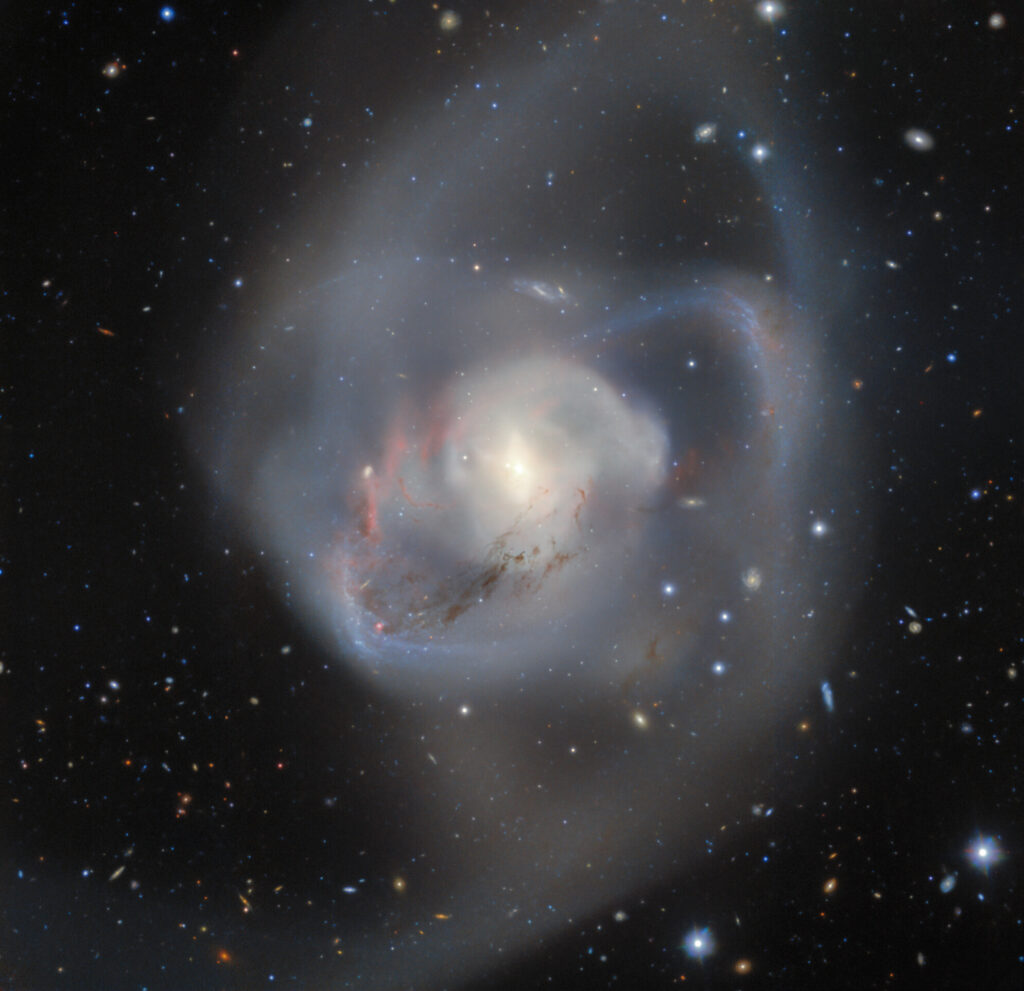Using the Gemini South Telescope, astronomers photographed the consequences of the collision of two galaxies that occurred a billion years ago. At its center is the closest known pair of supermassive black holes.

Collisions between galaxies are quite common situations in the Universe. In the future, the same fate awaits our Milky Way. In about five billion years, it will collide with the Andromeda Galaxy, which will lead to the formation of a single elliptical galaxy.
The consequences that similar events will lead to are clearly demonstrated by the following image taken by the Gemini South telescope. It captures the galaxy NGC 7727.
NGC 7727 is located at a distance of about 90 million light-years from Earth in the direction of the constellation Aquarius. The image shows huge swirling bands of interstellar dust and gas, resembling fresh cotton candy, that envelop the merging cores of the progenitor galaxies. They are surrounded by a chain of areas of active star formation and sedentary dust structures. Astronomers have also managed to find 23 objects that appear to be young globular clusters.
The most notable part of NGC 7727 is its galactic cores, left over from the original galaxies. They contain supermassive black holes. The mass of one of them is 6.3 million, and the other is 154 million solar masses. They are separated by a distance of 1,600 light-years and are gradually reducing the distance between them. It is assumed that in about 250 million years, they will merge into a single object, which will be accompanied by the formation of powerful gravitational waves.
According to astronomers, NGC 7727 began to form a billion years ago when a pair of spiral galaxies were drawn into a cosmic “dance”. The stars and nebulae composing them flew apart and pulled together again under the influence of gravity until the uneven, tangled node captured in the picture was formed.
According to https://noirlab.edu
Follow us on Twitter to get the most interesting space news in time
https://twitter.com/ust_magazine
